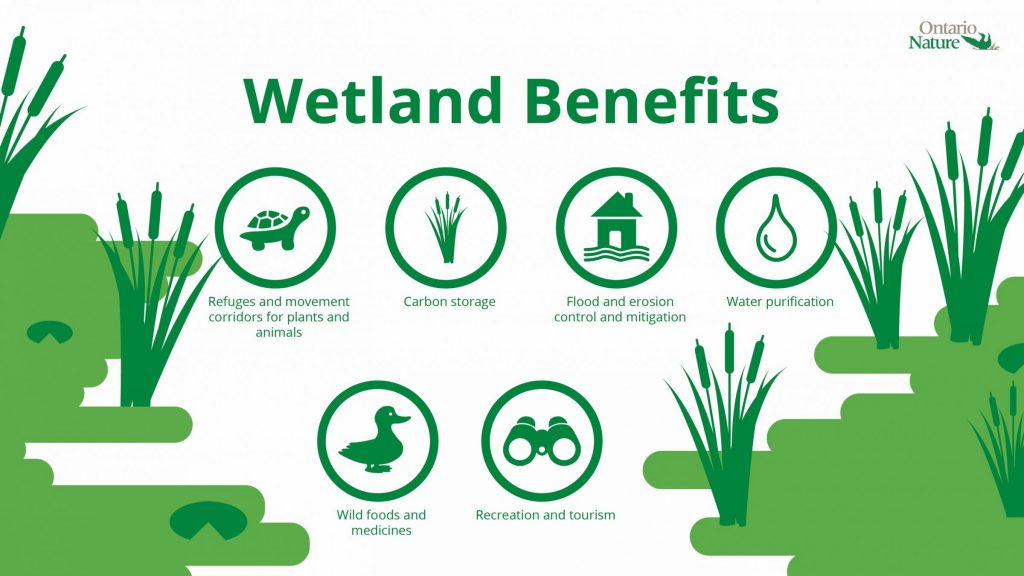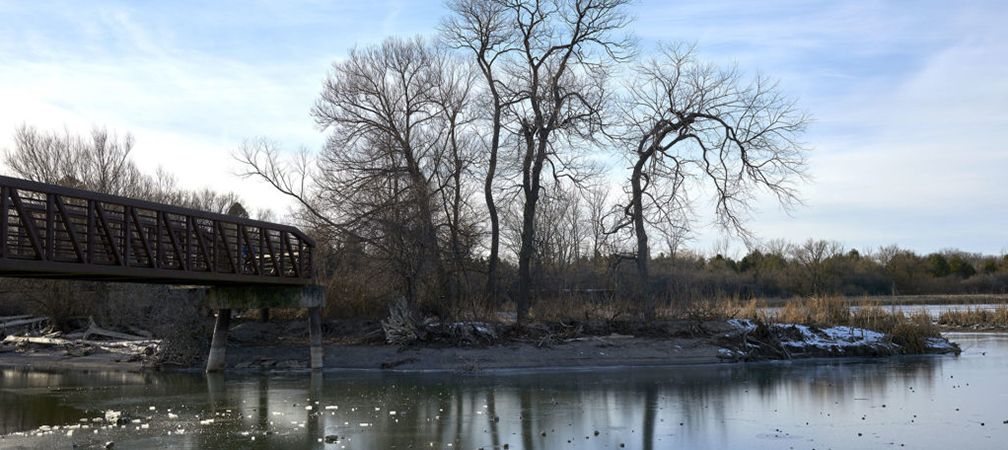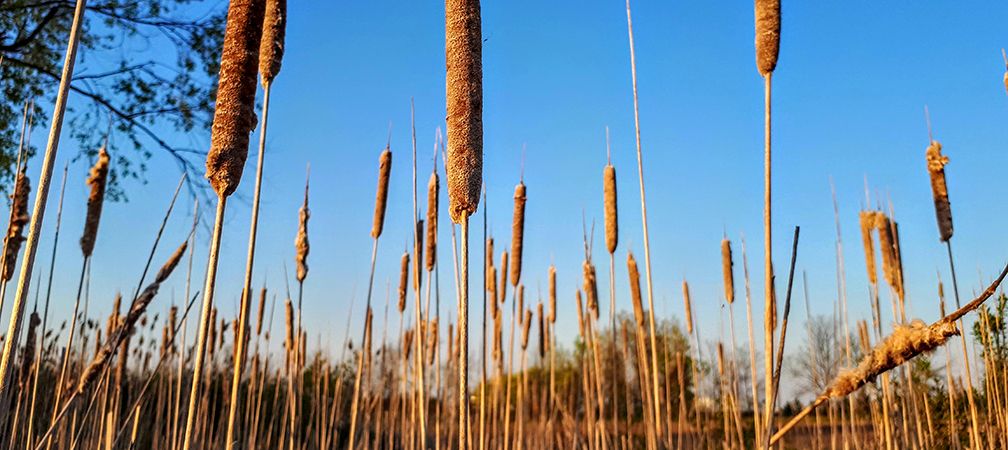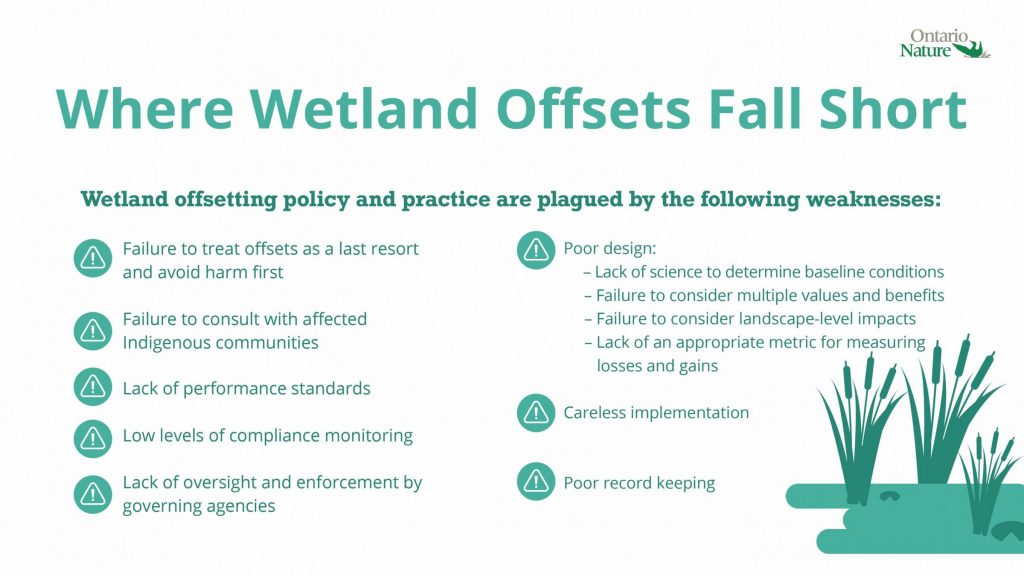Ontario Nature Blog
Receive email alerts about breaking conservation
and environmental news.
© Lora Denis
Spring peeper © Dave Huth CC BY-NC 2.0
I invite you to envision a woven tapestry waving in the wind. Each thread contributes a small piece to the myriad of unique patterns coming together to form a much larger work of art. Intact, the tapestry can bend and move with the ever-changing breeze due to the strength of each thread coming together with the others. If some of those threads are pulled out, moved around, or weakened, however, the tapestry risks being torn or unravelled by even the smallest gust.
As development pressures, climate change, and other threats drive the loss of wetlands in Ontario and across the globe, we risk losing critical threads in the complex tapestry that creates and maintains the natural world.

While many people are fighting to protect Ontario’s remaining natural wetlands, expanding urban and industrial developments continue “pulling threads” from those lacking legal protections. In response, various levels of government have pursued a strategy called “wetland offsetting,” which aims to compensate for the damage done.
Wetland offsetting involves a trade-off. Theoretically, it should create, restore, and/or enhance wetland ecosystems near where development has negatively impacted an existing wetland. It should be done such such that there is no net loss – ideally net gain – of wetland area and values (including biodiversity, ecosystem function, and/or social and cultural values). It should only be pursued as a final step in the “mitigation sequence” which describes a series of planning stages to avoid, minimize, and mitigate impacts from development before designing offsets for the residual damage.
The Business and Biodiversity Offsets Programme (BBOP) defines biodiversity offsetting generally as:
“measurable conservation outcomes of actions designed to compensate for significant residual adverse biodiversity impacts arising from project development after appropriate prevention and mitigation measures have been taken.”

Ontario doesn’t have a wetland offsetting policy in place, though the provincial government explored the possibility in “A Wetland Conservation Strategy for Ontario 2017-2030” and sought recommendations from an expert advisory panel. Lacking provincial direction, several Ontario conservation authorities (CA) have developed their own approaches. At least four CAs (Toronto and Region CA, Credit Valley Conservation, Lake Simcoe Region CA and Nottawasaga Valley CA) have developed detailed offsetting policies. Others have embedded general provisions for offsetting in broader planning policies.
Despite its potential benefits, wetland offsetting is the subject of growing controversy in Ontario:

Much of the concern about wetland offsetting stems from the fact that the loss of wetland ecosystems is guaranteed, while timely compensation for those losses is extremely uncertain. Recent research has revealed that even the most rigorous and well-established wetland offsetting programs (i.e., the United States’ wetland offsetting under the Clean Water Act) have been unsuccessful in achieving no net loss.
Furthermore, a study by Pezzati et al. (2018) estimated that wetland biodiversity often requires 10-1,000 years to recover after disturbance, even when supported by active restoration. This highlights the risk of incurring extended “temporary” losses when wetlands are removed for development under the questionable assumption that restoring another site will promptly provide adequate compensation for the lost ecosystem functions and biodiversity.

Despite the risks associated with wetland offsetting, urban and industrial expansion will not stop completely. Therefore, meticulous implementation of strict offsetting protocols represents an opportunity to compensate for at least some of the resulting damage to natural wetlands.
Ontario Nature is monitoring wetland offsetting practices in Ontario while advocating for high standards in local and provincial policies. For more information, please see: Navigating the Swamp: Lessons on wetland offsetting for Ontario.
Ontario Nature’s wetland initiative is generously funded by the K.M. Hunter Foundation and the McLean Foundation.

Gananoque Lake Nature Reserve © Smera Sukumar
Right now the province is trying to undermine wetland protection not by offsetting but through changes to the wetland evaluation manual. Protest this change on the environmental registry. Big change is to eliminate wetland complexes. Niagara Peninsula Conservation Authority estimates that this change will open up most Niagara wetlands to development.
We’ll end up looking like Venice, Italy
Complex natural ecosystems like wetlands can never be truly replicated after they have been removed, as much as some would fool themselves and the public that they can. It’s better to leave them be and work around them, while also providing a healthy buffer of land between the natural and the altered.
Hi
because the Kingston wetland is contaminated due to past industrial use, does it produce the same benefits as other healthy wetlands?
Have the residents shared the findings and other scientific data to help Ontario Nature understand the level of contamination?
Thank you
I feel that wetlands should stay where they are.